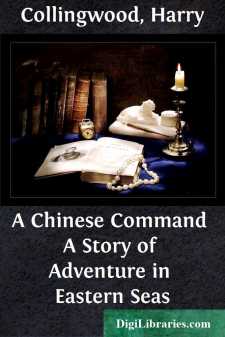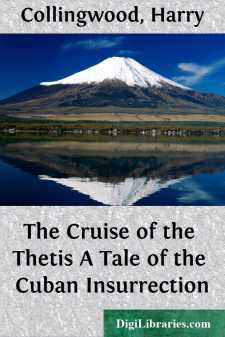Categories
- Antiques & Collectibles 13
- Architecture 36
- Art 48
- Bibles 22
- Biography & Autobiography 813
- Body, Mind & Spirit 142
- Business & Economics 28
- Children's Books 12
- Children's Fiction 9
- Computers 4
- Cooking 94
- Crafts & Hobbies 4
- Drama 346
- Education 46
- Family & Relationships 57
- Fiction 11828
- Games 19
- Gardening 17
- Health & Fitness 34
- History 1377
- House & Home 1
- Humor 147
- Juvenile Fiction 1873
- Juvenile Nonfiction 202
- Language Arts & Disciplines 88
- Law 16
- Literary Collections 686
- Literary Criticism 179
- Mathematics 13
- Medical 41
- Music 40
- Nature 179
- Non-Classifiable 1768
- Performing Arts 7
- Periodicals 1453
- Philosophy 64
- Photography 2
- Poetry 896
- Political Science 203
- Psychology 42
- Reference 154
- Religion 513
- Science 126
- Self-Help 84
- Social Science 81
- Sports & Recreation 34
- Study Aids 3
- Technology & Engineering 59
- Transportation 23
- Travel 463
- True Crime 29
Turned Adrift
Categories:
Description:
Excerpt
The Seizure of the “Zenobia”.
The Zenobia—A1 at Lloyd’s—was a beautiful little clipper barque of 376 tons register, and so exquisitely fine were her lines that her cargo-carrying capacity amounted to but a few tons more than her register tonnage; in fact, the naval architect who designed her had been instructed to ignore altogether the question of cargo capacity, and to give his whole attention to the matter of speed, and most faithfully had he carried out his instructions.
For the Zenobia had been designed and built to the order of the firm which owned the famous “Queen” line of sailing clippers trading between London and Natal; and the aim of the Company was to drive off all competitors and secure the monopoly of the passenger trade between London and the Garden Colony. And there was only one way in which that aim could be accomplished, namely, by carrying passengers to and fro in less time and greater comfort than any of the competing lines. The question of cargo did not matter so very much, for at that time—that is to say, about the year 1860—the steam service to South Africa was very different from what it is to-day. The steamers were small, slow, and infrequent; Natal was just then attracting a big influx of well-to-do people from England; passenger rates were high—as also, for that matter, was the freight on such special merchandise as was at that time being carried out to the colony—and those who took credit to themselves for their foresight believed that there was big money to be made in the sailing passenger trade. Needless to say, the competition between the different lines was exceedingly keen: but the owners of the “Queen” line were a very rich corporation; they were prepared to sink money in the effort to secure a monopoly; and the Zenobia was the latest outcome of their rather speculative policy.
At the moment when this story opens—namely, about two bells of the middle watch, on the night of 24 January, 1862—or rather in the early morning of 25 January, to be exact—the barque was somewhere about latitude 25 degrees south, and longitude 27 degrees west. I have not the precise figures by me, nor do they very greatly matter. The night was fine, clear, and starlit, with the moon, well advanced in her fourth quarter, hanging a few degrees above the eastern horizon, and shedding just enough light to touch the wave crests immediately beneath her with soft flashes of ruddy golden light. The wind was piping up fresh from the south-east, and the little clipper was roaring through it under all plain sail to her royals, with the yeast slopping in over her starboard rail at every lee roll and her lee scuppers all afloat; for quick passages were the order of the day, quick passages meant “carrying on”, and Mr Stephen Bligh, the chief mate and officer of the watch, was living fully up to the traditions of the service. This was the Zenobia’s second outward voyage. Her first trip had been accomplished in the unprecedentedly brief period of forty-six days; and it was now the ambition of her skipper and his two mates to beat even that brilliant record....












